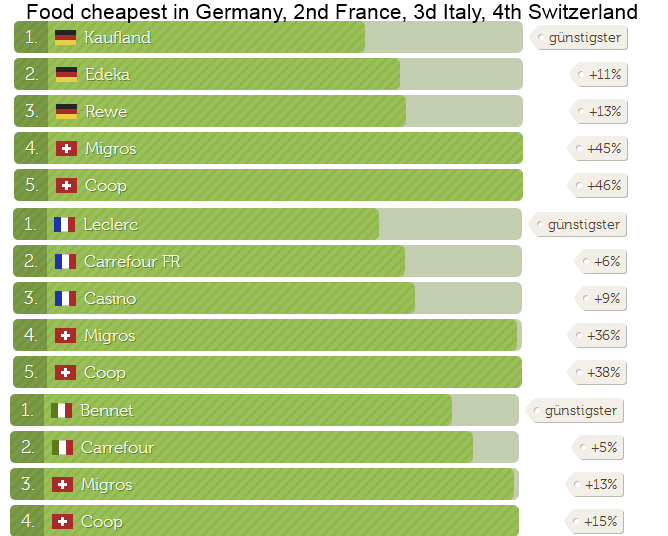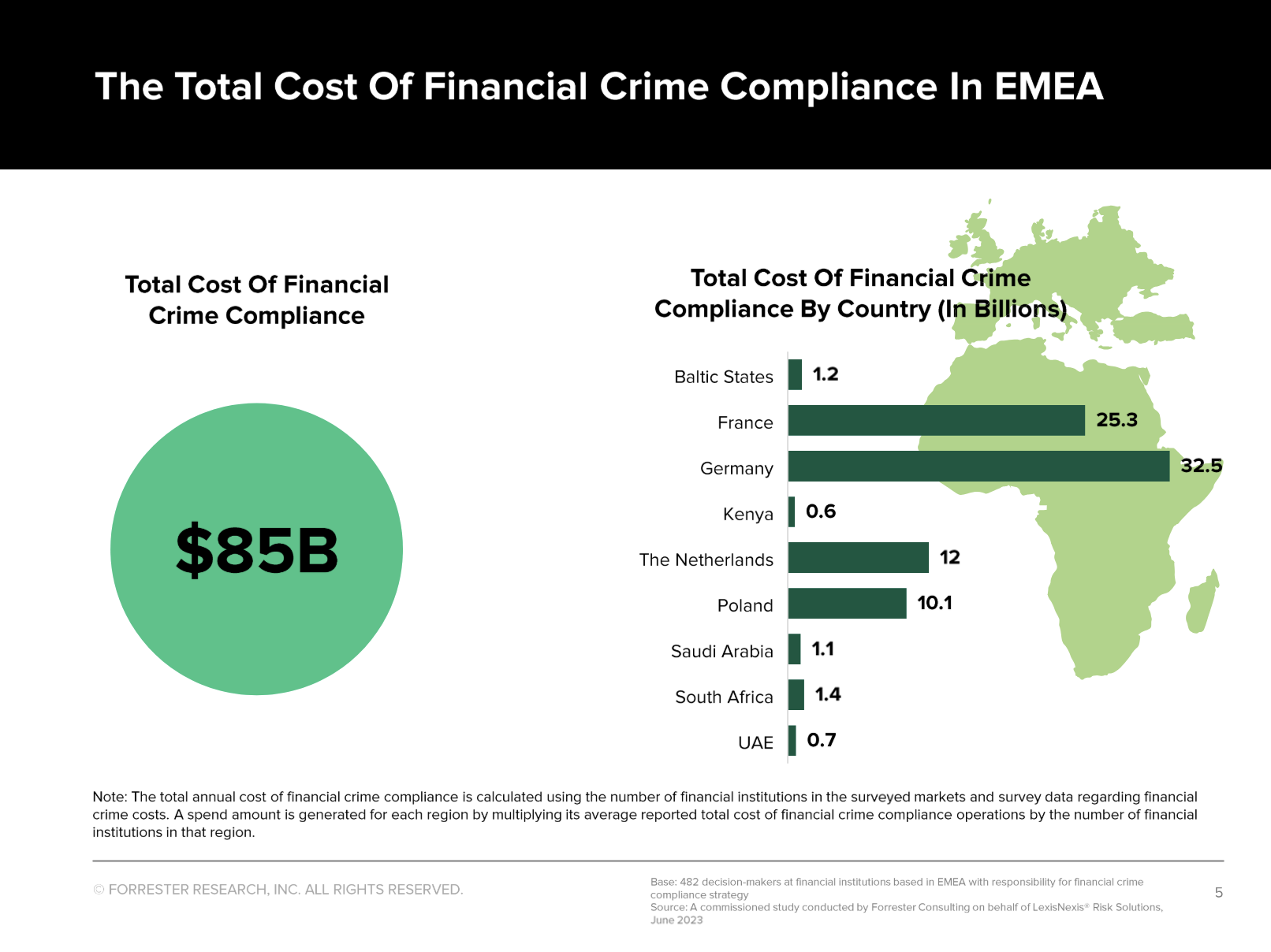Disinflation Finally Starting in Italy
The Swiss site preisbarometer.ch is run by the Swiss Consumer Association. Their price data shows that a food basket is 46% more expensive when compared between the German “Kaufland” shop and the Swiss “Coop”. Going to France into “Leclerc” gives you an advantage of 38% against Coop. However, for a Swiss shopping in Italy – at least close to the Swiss border – is not really worth it. Food price differences are only 15%.
I personally remember that still in 2009/2010 Italians came to Switzerland to take profit of cheaper Aldi prices.
Cosmetics:
Shopping in Germany is far more attractive when you buy cosmetics. Swiss Coop is again on the bottom of the list, but this time even with a 83% price difference. Shopping in France is only 25% cheaper and Italy once again only 12%.
Insights
- Competitiveness in the euro zone will not change quickly. Germany remains the country with the highest salaries and one of the cheapest consumer prices (former Eastern European countries are still cheaper).
- Despite the common currency – the euro exchange rate had been introduced in 1997 – Italian consumer prices have risen by 42% since then, but German ones only by 29%.

- Deflation and disinflation have finally started in Italy and France. Italian prices are up 1.3% YoY, French ones by 0.9%, while the German CPI moved up 1.6% (source Eurostat).
-
Disinflation has finally started for Italians (source Istat)
- On the other side, food prices are rising again, but in Germany 4.7% for food and alcoholics against Italy +3.0%. Reasons are the huge (seasonal??) price hikes in fresh products.
- Italian gross wages and labour costs rose by 1.7% according Istat. The ECB and European leaders were dreaming of a reduction of unit labor costs. Rising gross labor costs and falling unit labor costs implies less units produced and weaker GDP. Still falling factor prices might help to achieve some better productivity.
- Non the less, lower inflation and higher wages means that finally Italian entrepreneurs reduce some of their profit margins.
- Italy and even more Spain (prices up +1.8% YoY) seem to be hit by supply-side inflation. Reasons for this phenomenon are insufficient competition or supply-side price shocks (e.g. oil prices).
- As for Switzerland, most Swiss consumers do not really care about high prices. Salaries are still high enough.
Are you the author? Previous post See more for Next post
Tags: disinflation,France,Germany Consumer Price Index,inflation,Italy,Switzerland

































2 comments
trader
2013-06-16 at 10:10 (UTC 2) Link to this comment
RE 7.: – Not only salaries, “usland” products are generally considered “abfall” – at least most of them like those in Aldi 😉
Joe
2013-06-18 at 21:51 (UTC 2) Link to this comment
A lot of Swiss won’t agree on this. Shopping in “usland” is a national sport is Switzerland. I am not talking about the highly developed border shopping. I mean buying abfall cars, abfall furniture or abfall house appliances at half price in Germany or online. Even abfall banks are cheaper in Germany.